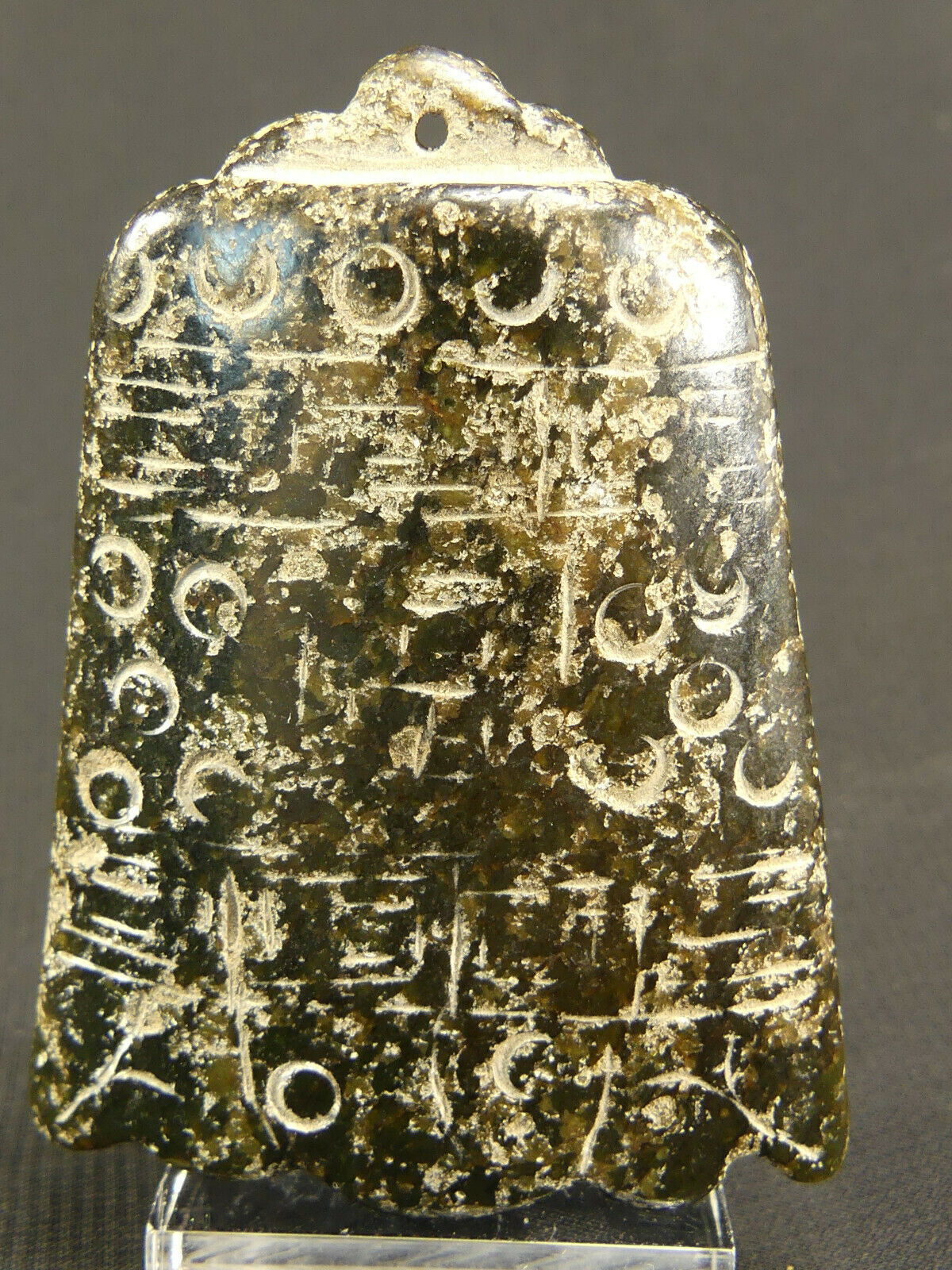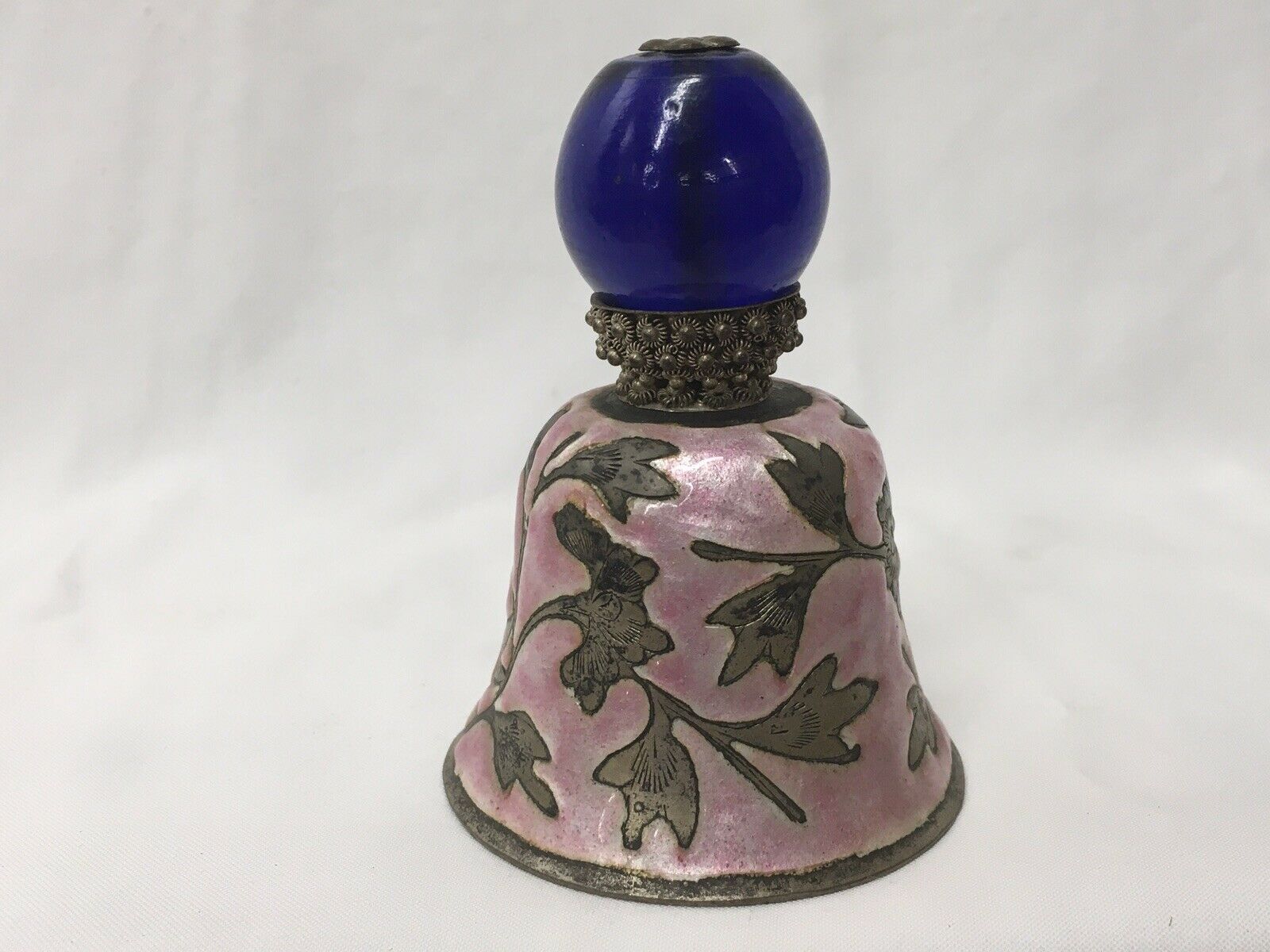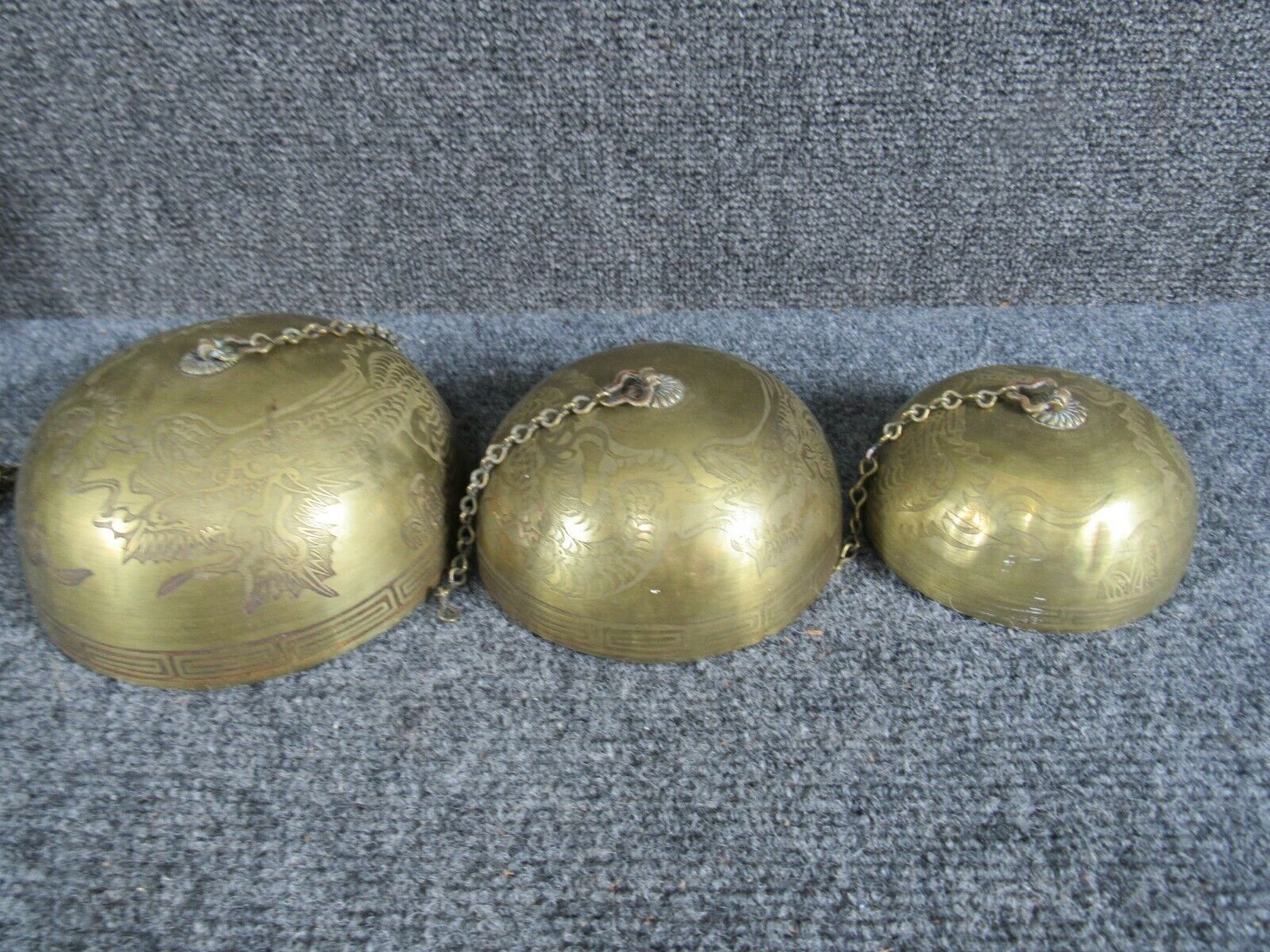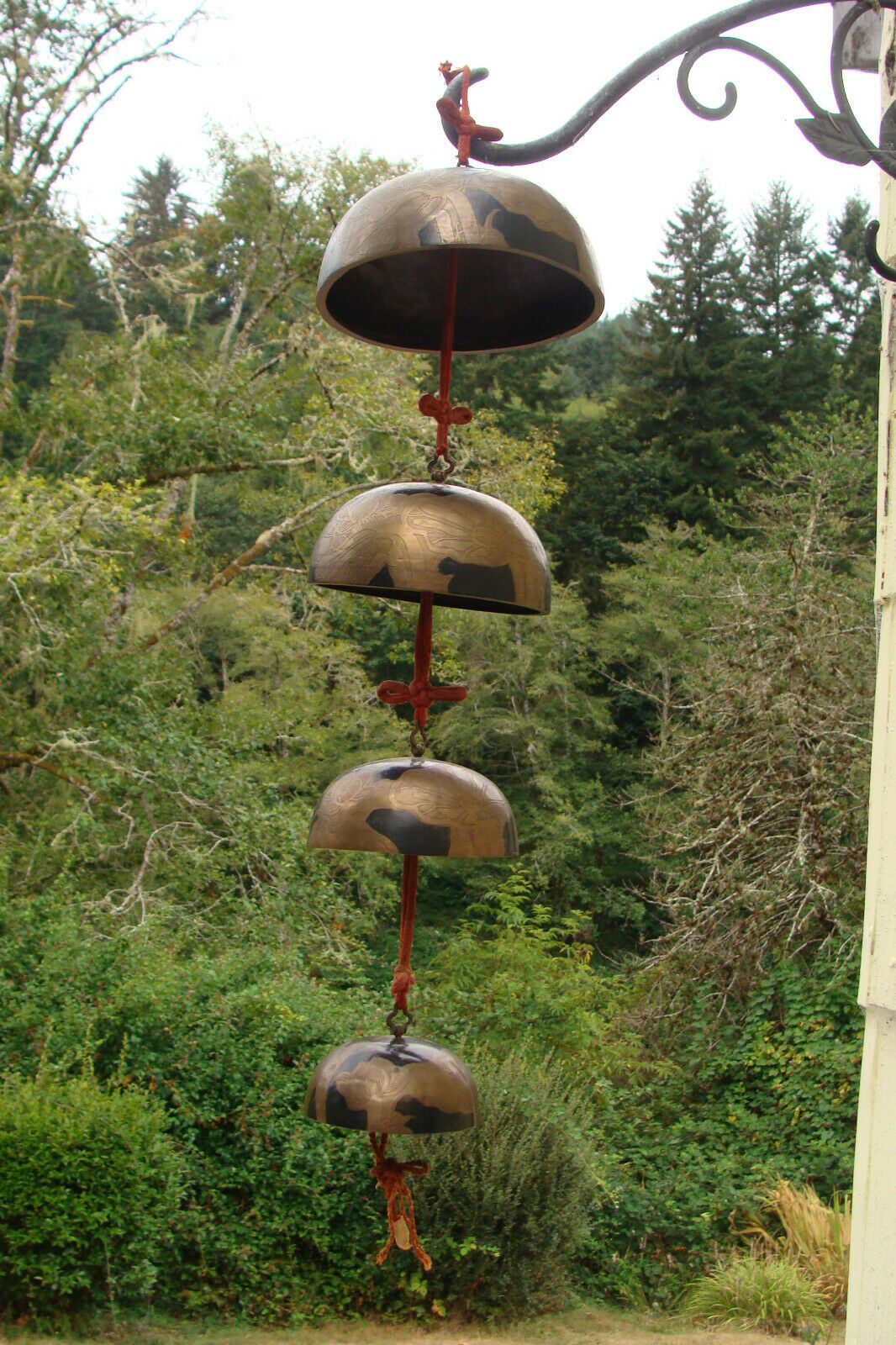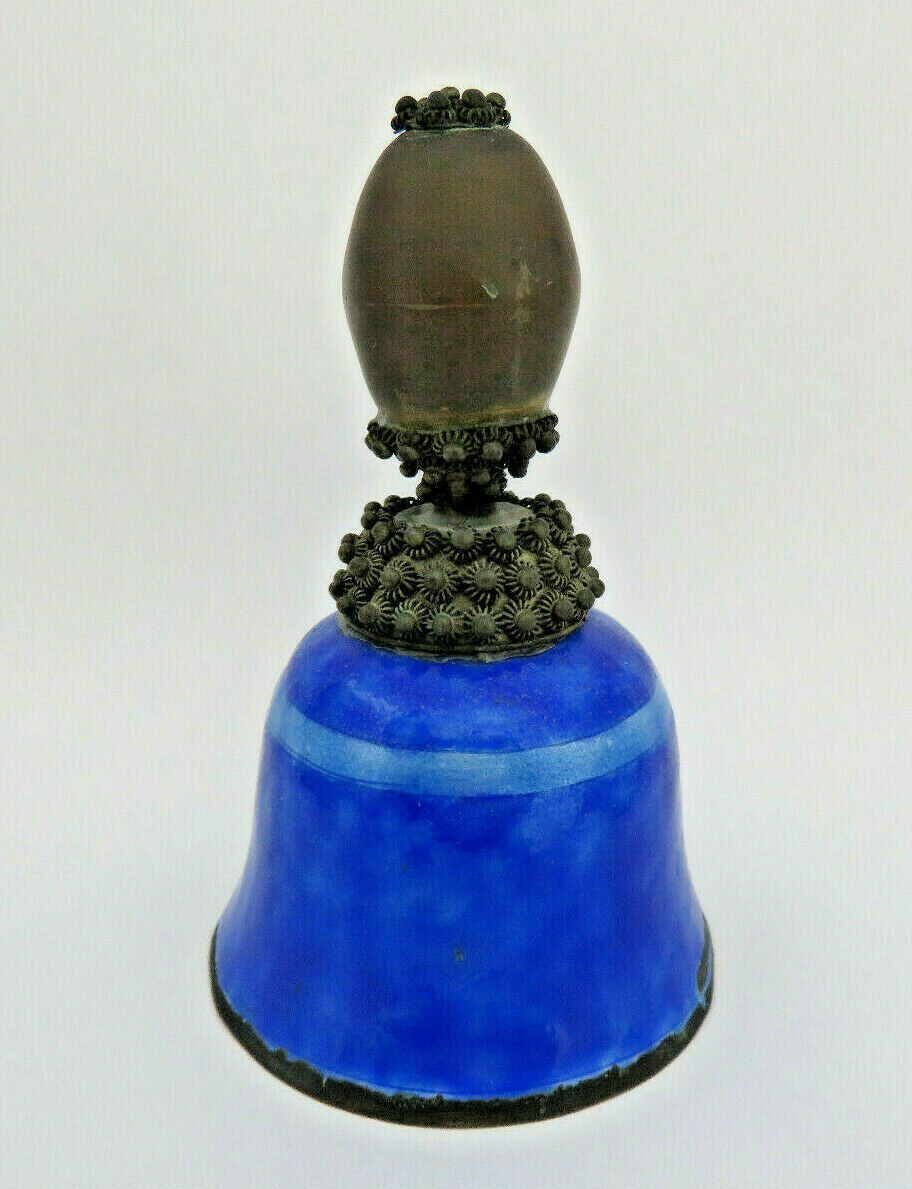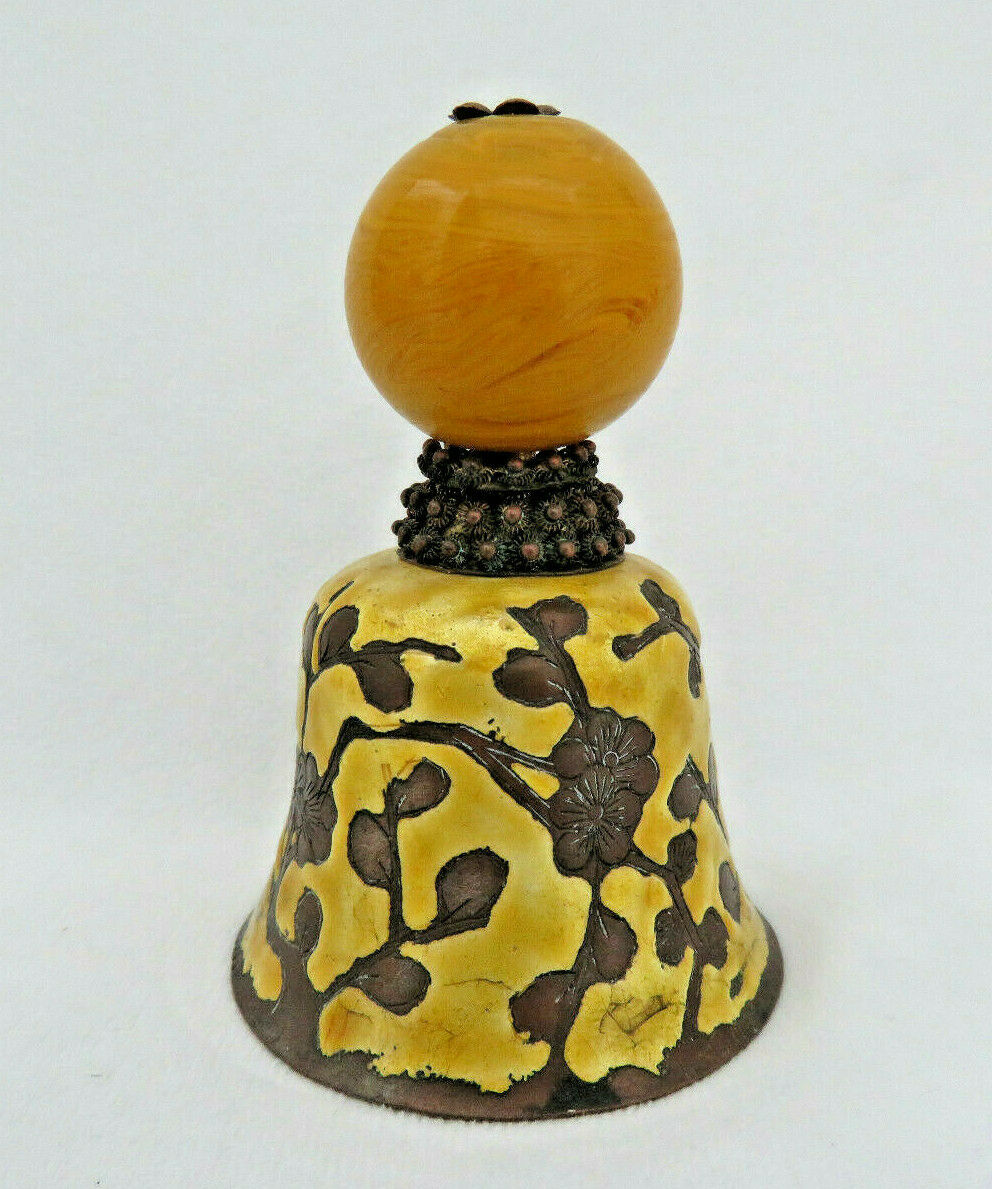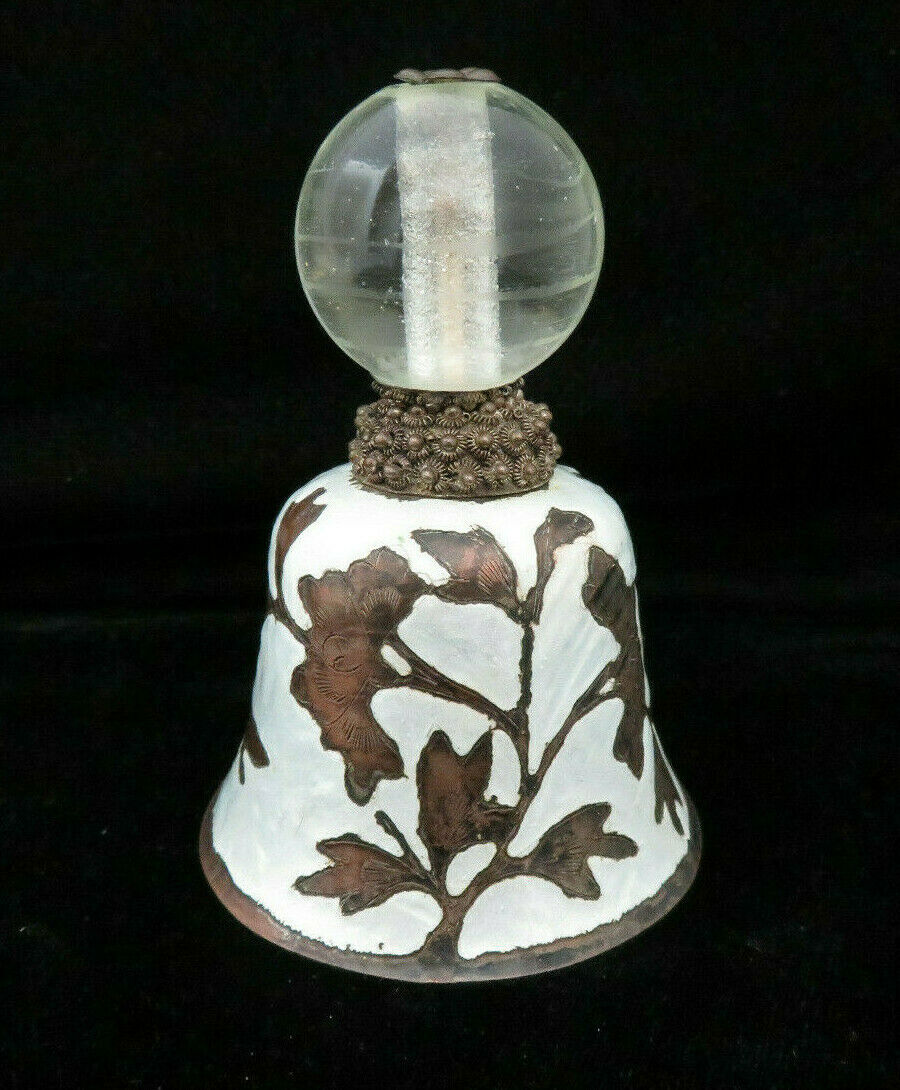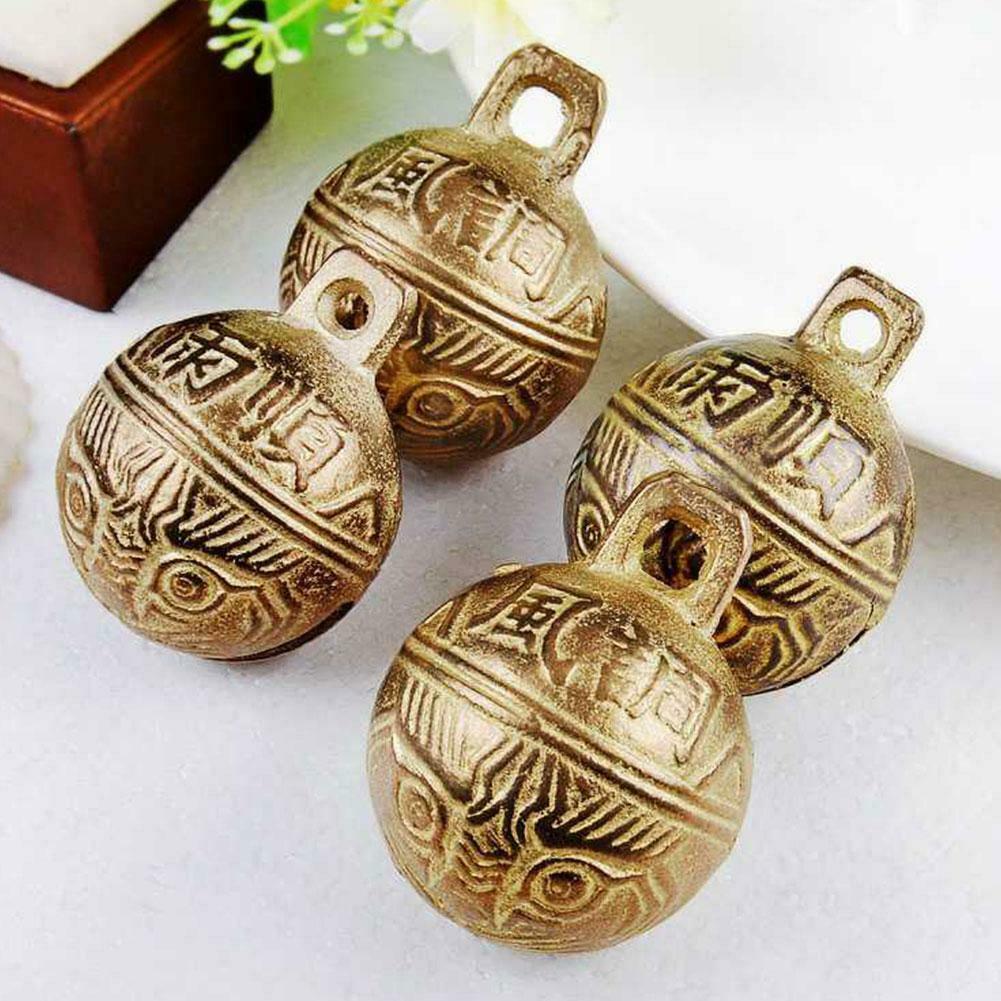-40%
Ancient Chinese Black Jade "Ringing Bell" Amulet. Zhou Dynasty 1027 BC--221 BC
$ 1848
- Description
- Size Guide
Description
Ancient CivilizationsAntiques, Artifacts & Fine Collectibles
Ancient Chinese Black Jade “Ringing Bell”
Amulet
A Ritual Offering to the Ancestors
English Translation of Pictographic Characters Provided
c. Zhou Dynasty
1027 BC—221 BC
NOTE:
William D. Houghton, the President of ANCIENT CIVILIZATIONS
, a State of Washington Licensed Business,
assumes all responsibility for the information contained in this description and for the English translation and transcription of the ancient Chinese graphic characters.
Furthermore, I prohibit the further dissemination of this information in any written, video, or electronic format without my expressed, written approval.
Thank You!
SUMMARY
Item:
Black Jade “Ringing Bell”
Amulet
Country:
China
Dynasty:
Zhou
(pronounced “
Joe
”)
Est. Date: 1027 BC to 221 BC
Material:
Jade, Black nephrite
Approximate Measurements:
•
Height:
2.49” (63mm)
•
Width:
1.88” (48mm)
•
Depth:
.62” (16mm)
•
Weight:
2.7 oz (78gr)
This ceremonial, black Jade Bell Amulet is modeled after bronze bells called a “
Bo
” in Chinese and dates approximately to the Zhou Dynasty of ancient China,
1027 BC to 221 BC.
Because of the tiny circles and parallel lines incised on the surface of the jade, this unique jade bell appears to be “
vibrating
” and “
ringing
” just like its bronze cousins!
This is the first time I have ever seen this technique utilized on an ancient Chinese
jade
bell.
{
See photos # 2-3.}
The small, suspension hole at the top classified as a “uniform-bore hole” that measures just 2mm in diameter.
Although it has a small, suspension hole, the jade bell also has a cut groove at the base that would have allowed the bell to be securely mounted on a wood base or stand.
{See photos # 3 & 6.}
Condition: No chips, cracks, repairs, or restorations. Only minor surface scratches, white calcification, and differential weathering/pitting.
This amulet was professional cleaned in China by the previous owner.
Please see macro photos as they are part of the description. Thank You for looking!
DETAILS
This ceremonial, black Jade “Ringing Bell” is modeled after bronze bells called a “
Bo
” in Chinese and dates approximately to the Warring States Period of ancient China, 455 BC to 221 BC.
NOTE:
Bronze
bo
-bells have straight rims at the bottom that look different from the other type of bell called
yong
-bells that have concave rims.
The vertical hanging pose of this central
bo
-bell also stands out from the uniform tilted suspension seen across the racks that originally held
yong
-bells.
Neither type of bell had clappers, but were instead stuck on the outside by wooden mallets.
Each bell was also “tunned” to produce 2 different notes, depending on where the bell was struck.
Ingenious
!!
Because of the tiny circles that represent the bosses found on real bronze bells of this period and on and parallel lines incised on the surface of the black jade bell, this unique jade bell appears to be “
ringing
” like its bronze cousins!
This is the first time I have ever seen this technique utilized on an ancient Chinese jade bell.
{See photos # 2-3}
·
This imitation jade bell has a large number (about 16 on each side) of decorative circles cut into the jade bell.
Each circle measures about 5mm in diameter and was made with a hand-powered drill made from a hollow bone and a paste of quartz particles.
The circles also imitate the casting protrusions called bosses found on bronze bells during the Zhou Dynasty.
{See photos # 2-3}
·
As mentioned above, there are also a series of 3 parallel lines that are inside 2 banded sections of the bell.
Again, these banded sections imitate the style and “
vibrations
” of their bronze cousins.
In ancient China, the 3 parallel lines (
San
in Chinese) also symbolizes “Heaven, Earth, and Man.”
{See photos # 2-3}
ENGLISH TRANSLATION
In addition to the decorative circles and parallel lines mentioned above, this jade bell also has exceedingly small pictographic characters incised into both sides.
These tiny characters were only meant for the eyes of the Ancestors, as human eyes were not worthy.
Here are some of the characters that I can decipher:
·
King: This character looks like the English letter “
I
” with a shorter line in the center. This character is shown on both sides.
These characters are only about 5mm tall.
{See photo # 9 & 11.}
Water
:
{See photo # 9.}
Vision or to see.
{See photo # 9.}
·
Poured ritual wine/water:
{See photo # 9.}
·
Man
·
Perfect Work
{See photo # 5.}
·
Jade
·
Clouds of Heaven (Tian) on the top of the bell.
{See photo # 4.}
·
Moon
This configuration represents the power of jade and of this jade bell to transport the soul of the departed safely from Earth to the Heavens and be welcome by their Ancestors to Eternal life.
Bells in Ancient China
From the Western Zhou Dynasty to the Spring and Autumn Period and the Warring States Period, musical bells shaped like combined pairs of tiles appeared in many areas of the country. The mouth of such a bell faced down, as it was struck more easily when it was in a suspended position.
Yongzhong, niuzhong
and small
bo
bells shaped like combined pairs of tiles appeared in chimes or groups. Many of them bore inscriptions of events or were dedicated to a family or person.
The court of the Zhou Dynasty promulgated the ritual and musical institutions embodied by bells and musical stones, suited to the hierarchy. As a musical instrument of the aristocracy, the bell deviated from its original nature and displayed a symbolic function. The suspending pattern and number of bells and musical stones demonstrated one's position and power.
In the Zhou Dynasty, bronze bells emerged as musical instruments for rituals, celebrations, and performances held by the aristocracy.
Bronze production was strictly for the upper class in ancient China, and bronze was only for the aristocracy and imperial use.
The famous, cast bronze zhong (
鐘
) bell, is classified as a suspended, clapper-less bell.
Zhong were normally cast in sets of six, seven, eight or more to form a musical scale, and they were played in the company of both string, drum, and wind instruments.
The mouth of the bell is shaped in the form of a flattened ellipse and each one was skillfully and precisely cast so that it would produce two different pitches, depending on where the musician struck the side with his wooden mallet.
Amazing!!
The Chinese Bronze Age was established by 1700 B.C.E. in the northern region that was the base of the Shang dynasty's base. Bronze objects were typically used in ancient China for state ceremonies and rituals venerating ancestors.
These bells had a special purpose, one that links ritual to the arts in ancient China. They were cast as a graduated set of bells of varying tones and sizes that would have been struck with mallets to create music. (Bells of this scale would not be produced in Europe for another millennium.) The music created by such bells was an integral part of Chinese ritual life, used to create bonds of connection between the living and the dead, the listeners and their rulers.
This bells appears to have ancient Chinese characters called Seal Script (in Chinese (
Ku’wen
) cast on the flat, top side of the bell.
However, the oxidation has obscured the fine lines of each character to such an extent that I am unable to translate them. Research suggests that these characters may have indicated the bell’s musical pitch.
Each bronze bell was designed to produce two specific tones; this is known because inscriptions were often cast into the bronze naming the bell's tones.
Once a bell was cast, its tone could not be changed or adjusted. What remains a mystery for scholars is how ancient Chinese metal smiths could cast these instruments with such precision so early in history.
Scholars have learned a great deal about music making in ancient China from archaeological research. One spectacular discovery in 1977 was the tomb of Marquis Yi of Zeng, the ruler of a small Chinese state in the 5th century B.C.E. and a patron of music. Over one hundred instruments were preserved in his tomb, including a massive set of sixty-five bells in a separate burial chamber. As this burial site indicates, music was so important that instruments were set up to accompany the deceased in the afterlife.
NOTE:
You are among the first persons in the world to read the translation of these ancient Chinese pictographs and graphic characters, as this is the first translation that has ever been done in any language in over 3,000 years since the characters on this jade bell documented the offerings made to the Ancestors in Heaven (
Tian
)!
NOTE: This object is unconditionally guaranteed authentic. It has been legally imported to the United States., and is legal to sell and own under U.S. Statute Title 19, Chapter 14, Code 2611, Convention on Cultural Property.
REFERENCES
·
Museum of Chinese History, Beijing
·
National Museum of China
·
Shanghai Museum
·
The Ancestral Landscape
, David N. Knightley, 2000
·
The Great Bronze Age of China
, edited by Wen Fong, MET, 1980
·
Imperial Tombs of China
, 1995
·
British Museum, Jessica Rawson
·
Smithsonian Museum, Sackler & Freer Gallery, WDC
·
Virginia Museum of Fine Arts (VMFA)
·
MET, New York
Please ask any questions you may have before you bid! Thanks for Looking!
Please review all 12 photos as they are part of the description.
Per e-Bay's rules, PayPal only please!
THANKS!
FREE SHIPPING cost includes Insurance and is accurate for all 50 United States.
International buyers are responsible for all shipping costs, full insurance, and any import taxes or duties.
No international returns. Thank You!
